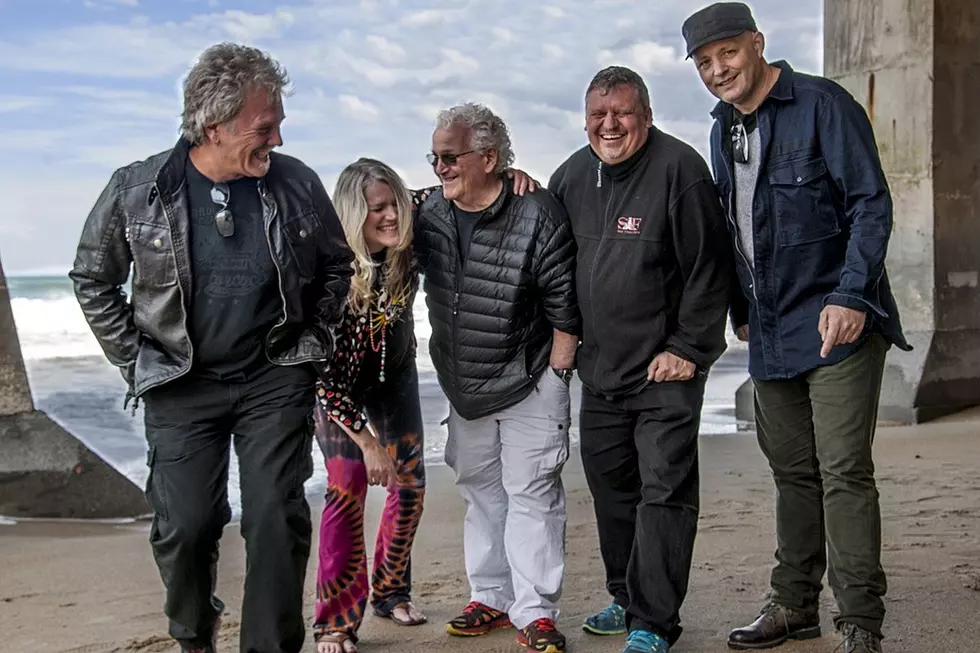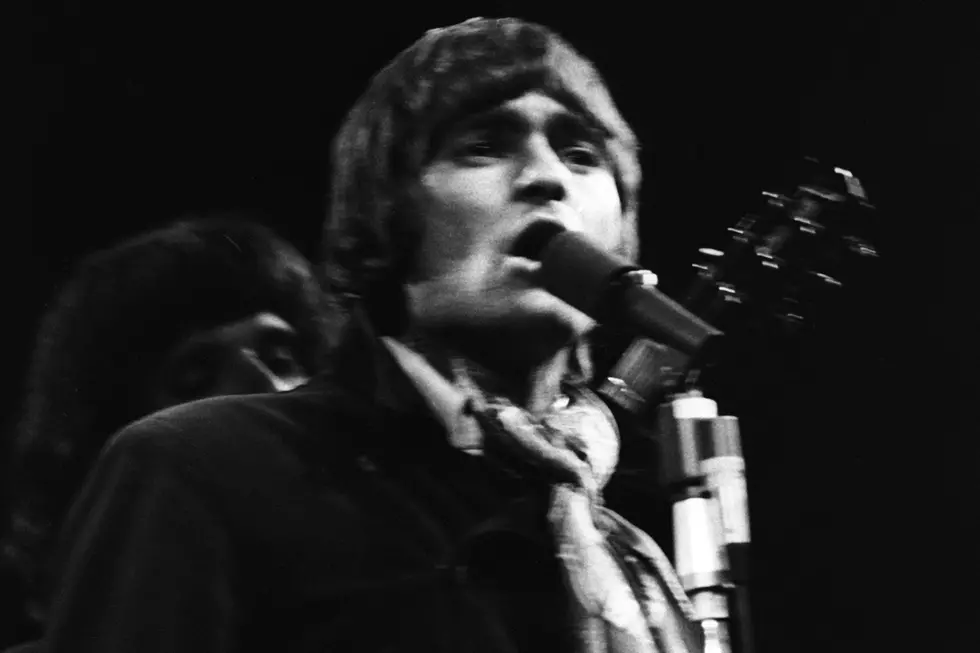
How Jefferson Starship Reached Their Zenith With ‘Red Octopus’
Jefferson Starship's two-times platinum smash Red Octopus will always be best known for its Marty Balin-sung No. 3 hit "Miracles." But the album, released on June 13, 1975, was much more than the sum of its breakout song.
Balin, cofounder of the Hall of Fame precursor group Jefferson Airplane, returned as a full-time member of Jefferson Starship for Red Octopus, and wrote or co-wrote five of the LP's 10 tracks. But every other figure in this now eight-person collective, save for drummer John Barbata, shared songwriting credits too.
In keeping, Red Octopus – which found David Freiberg, Paul Kantner and Grace Slick sharing lead vocal duties with Balin – succeeded through sheer force of varietal will. Major contributions from guitarist Craig Chaquico, violinist Papa John Creach, keyboardist Freiberg and bassist/multi-instrumentalist Pete Sears gave the album a compelling momentum, even for those who arrived having only known "Miracles" from the radio. From song to song, Red Octopus played to every strength of Jefferson Starship's collaborative whole.
The album-opening "Fast Buck Freddie," co-written by Slick and Chaquico, felt like an Americana-infused update of the old Airplane aesthetic. The Creach showcase "Git Fiddler" combined a fleet, down-home feel with a funky groove. Sears' Procol Harum-inflected "Sandalphon" worked in contrast to the pop-leaning "Play on Love," also from Slick.
The Balin-Chaquico-Sears vehicle "Sweeter Than Honey" points to the harder-edged sound to come at the turn of the '80s. "Oh, man. I remember Red Octopus very fondly, and I really loved playing on that album," Chaquico said in a 2012 interview. "It was my second album as the guitar player in that band. There were two instrumentals on that record too, and a lot of people forget that."
None of this would have been possible, however, without a long period of team-building work together.
Kantner and Slick had first collaborated with former Quicksilver Messenger Service member Dave Freiberg on 1970's Blows Against the Empire. Slick's 1974 solo album Manhole featured Pete Sears, who earlier appeared on Papa John Creach's first solo album. Both John Barbata and Creach had been latter-day members of Jefferson Airplane, where Balin was initially paired with Kantner and Slick. Balin contributed the ballad "Caroline" to 1973's Dragon Fly before officially joining Jefferson Starship in January 1975. Kantner's discovery of the then-20-year-old guitarist Craig Chaquico completed the creative mix.
Today, this narrative tends to feel somehow preordained, but it certainly didn't at the time. In fact, Jefferson Starship’s legend initially grew out of a one-off free Central Park concert, held in May 1975 before Red Octopus was in stores. As with everything else, Kantner admits the band's appearance there was more happenstance good fortune than grand plan.
Turns out, he just liked the setting: “I never sense the group is on the verge of anything,” Kanter said in a later interview. “We carry on, in our own way, and what comes out of it is normally entirely unpredictable. My favorite places to play are outdoors, in the parks.”
A similar kind of providence worked in their favor over a series of '70s-era album covers. In time, fans found what appeared to be a collective theme covering air, then water, then fire and then earth. That started with their gold-selling debut Dragon Fly, which went to No. 11 on the Billboard album charts and featured the single "Ride the Tiger." Next came Red Octopus which, of course, had a water-themed cover.
Spitfire and Earth, both platinum releases, followed in 1976 and 1978, respectively. Again, Kantner chalked it all up to coincidence. "That sort of came about almost by accident, as we started off with Dragon Fly in that series," he said. "That was obviously air, flight. Then Red Octopus came next, which was water. Then Earth, and then Spitfire, which was fire. That was a nice little combination of elements that worked out almost accidentally."
Whatever brought them together, and how it all fit into a collaborative whole, may have been a mystery – but the success of Red Octopus was undeniable. This layered triumph remains, even today, the best-selling project from any iteration of the Jefferson Airplane / Jefferson Starship / Starship family tree of bands.
"That was an album with a lot of influences, and it was so great being in a band like that with eight people," Chaquico added. "They were all different singers, different songwriters, with different styles – from Papa John Creach, an old black violin player, to the teenage-hippie lead guitarist. [Laughs.] I remember me being in the fray back then, thinking: 'I’ve been thrown in the deep end. Are they ever going to figure out that I am kind of making it up as I go along?' [Laughs.] Still being a teenager when we recorded that, it was quite a thrill. I was just trying to fit in with all of these different styles going on at the same time."
Other successes were to follow, to be sure. But none have held together quite this way – principally, because Jefferson Starship itself didn't. The group began splitting apart almost as quickly as it reached this creative peak. Creach left in August 1975 to pursue a solo career. Their subsequent Earth rose to No. 5 on the strength of the Top 10 hit "Count on Me," but by then Slick and Balin had left.
Slick would bounce in and out of the lineup, missing 1979's Freedom at Point Zero and then returning toward the end of the sessions for 1981's Modern Times. By then, Mickey Thomas was out front, setting a course for a split with Kantner and a transition from Jefferson Starship to Starship. Thomas was ultimately paired with Slick from 1981-88; she retired not long afterward. Chaquico left in 1990.
That left Thomas and the late Kantner to perform with separate versions of the group – each focusing on different eras. Kantner's Jefferson Starship (which featured Red Octopus-era member David Freiberg and Donny Baldwin, from the early-'80s Kantner-Thomas lineups) still performed "Miracles," though without the original lead singer. The late Balin was back for a second stint between 1993-2008, but then returned to solo work before his death. Creach was part of the same early-'90s reunion, but also passed in 1994.
Legends Who Never Had a No. 1 Single
More From Ultimate Classic Rock









